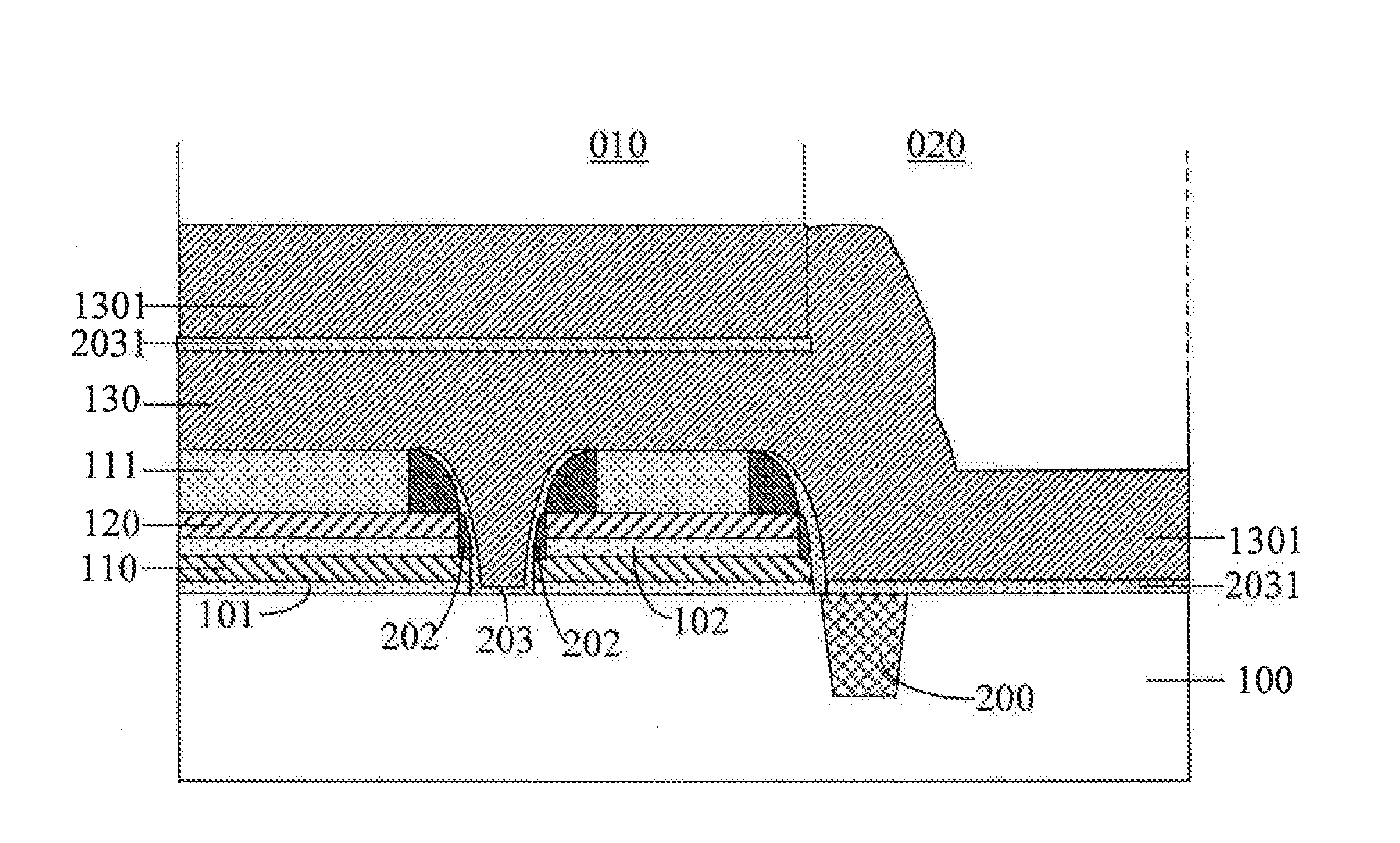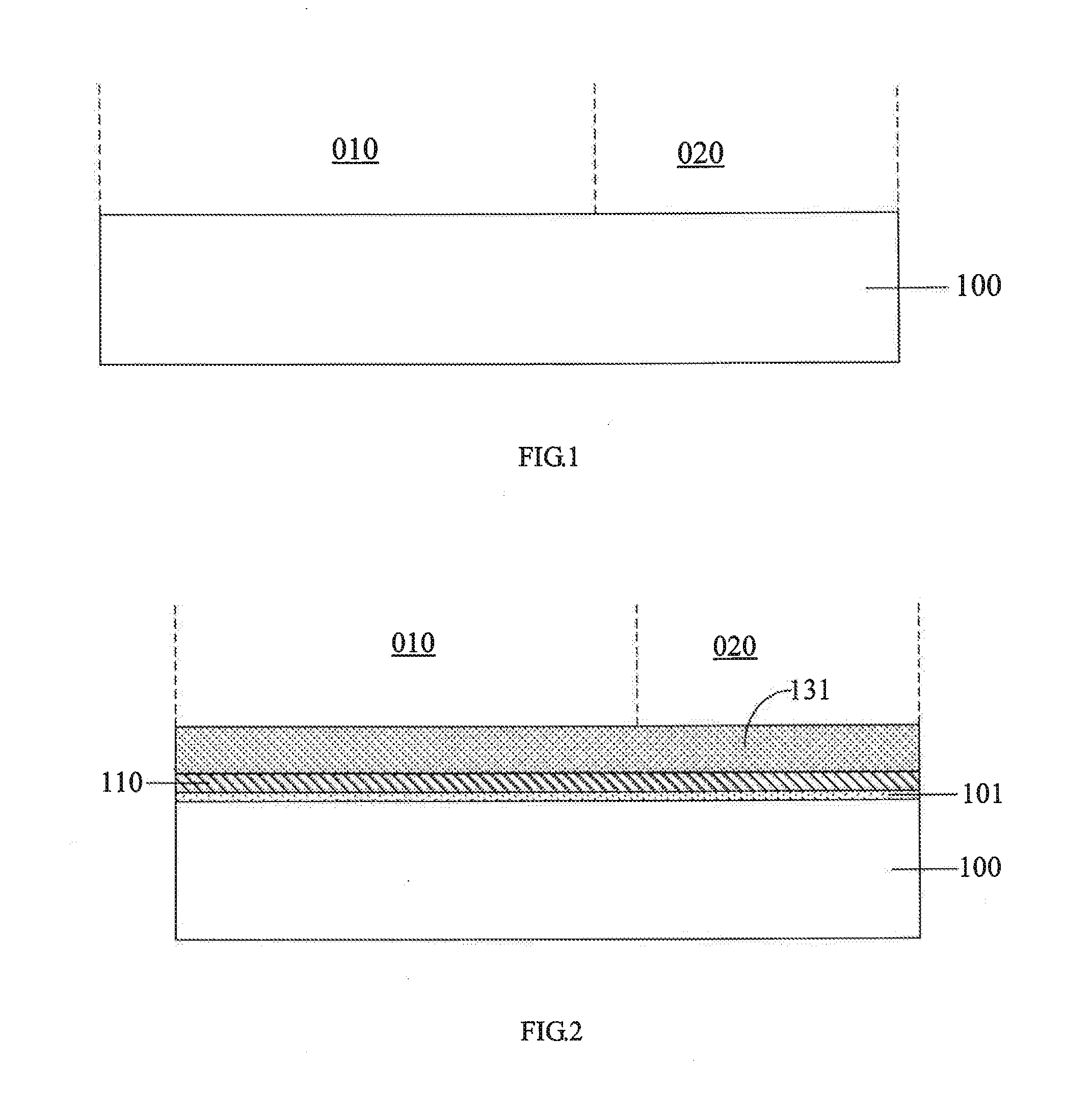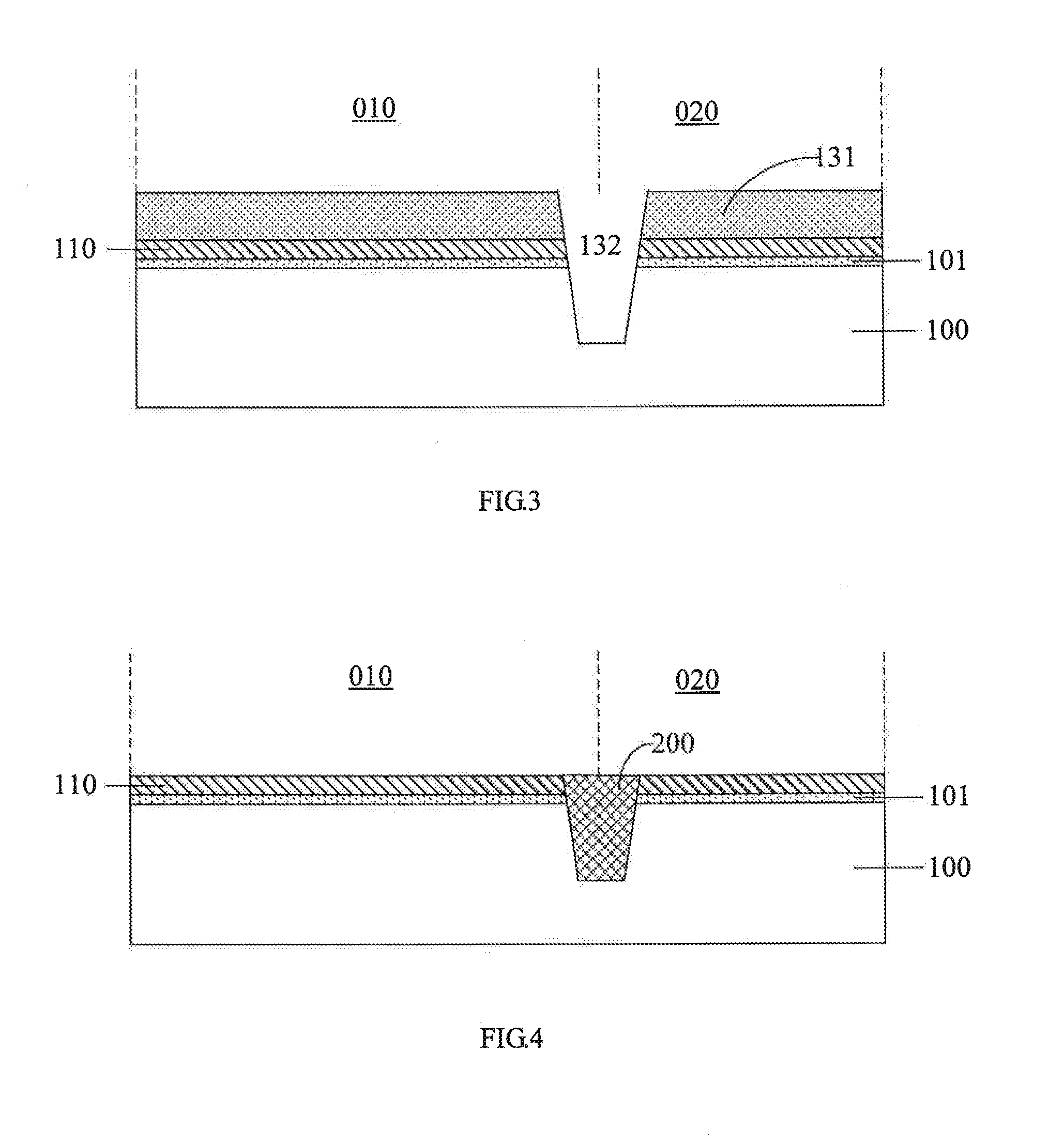Method of manufacturing semiconductor device
a manufacturing method and semiconductor technology, applied in the direction of semiconductor devices, basic electric elements, electrical equipment, etc., can solve the problems of difficult to achieve the reduction of programming voltage, which is required for increasing storage density, and the difficulty of increasing the existing storage density of flash memories, so as to eliminate the issue of “over-erasure”, reduce the size of the chip, and maintain the electrical isolation performance of the existing chip
- Summary
- Abstract
- Description
- Claims
- Application Information
AI Technical Summary
Benefits of technology
Problems solved by technology
Method used
Image
Examples
Embodiment Construction
[0023]Exemplary embodiments are described in detail below in conjunction with the accompanying drawings so that this disclosure will be thorough and easily understood.
[0024]A method of manufacturing a memory device in accordance with preferred embodiments will be described in detail with reference to the accompanying drawings.
[0025]Turning now to FIG. 1, in a first step of the method, a semiconductor substrate 100 is provided. The semiconductor substrate 100 may typically be a silicon substrate or a silicon-on-insulator (SOI) substrate. The semiconductor substrate 100 includes a first device region 010 and a second device region 020.
[0026]Next, in a second step, a first dielectric layer 101, a first conductive layer 110, a second dielectric layer 102, a second conductive layer 120 and a first etch stop layer 111 are sequentially formed over the semiconductor substrate 100 in this order.
[0027]The first dielectric layer 101 may be a gate oxide layer typically comprised of silicon diox...
PUM
 Login to View More
Login to View More Abstract
Description
Claims
Application Information
 Login to View More
Login to View More - R&D
- Intellectual Property
- Life Sciences
- Materials
- Tech Scout
- Unparalleled Data Quality
- Higher Quality Content
- 60% Fewer Hallucinations
Browse by: Latest US Patents, China's latest patents, Technical Efficacy Thesaurus, Application Domain, Technology Topic, Popular Technical Reports.
© 2025 PatSnap. All rights reserved.Legal|Privacy policy|Modern Slavery Act Transparency Statement|Sitemap|About US| Contact US: help@patsnap.com



